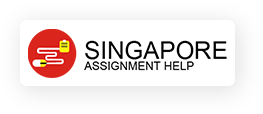| University | Singapore University of Social Science (SUSS) |
| Subject | Taxation |
Assignment Details:
Cookie World Pte Ltd owned subsidiary companies in Malaysia and Singapore for the production of cookies since 1 January 2017. The subsidiary company in Malaysia, known as Cookie (M) SdnBhd (Cookie M), produced cookies that catered to the mass market in Singapore as well as countries outside Singapore. The subsidiary company in Singapore, known as Cookie (S) Pte Ltd (Cookie S), produced cookies that were premium in quality and catered only to the Singapore market. Both the subsidiary companies were wholly owned by Cookie World since 1 January 2017 and they had the same financial year-end of 31 December.
Cookie M made profits in Malaysia as costs of production and business expenses in Malaysia were low. With its after-tax profits derived in Malaysia, Cookie M paid dividends of $150,000 to Cookie World in the financial year ended 31 December 2017. The dividends had suffered tax at source at 18% in Malaysia and the headline tax rate in Malaysia was 24%. There was no withholding tax on dividends in Malaysia.
Buy Custom Answer of This Assessment & Raise Your Grades
Cookie M was also financed by a loan provided by Cookie World since 1 January 2017. The loan principal sum was $3,000,000. The interest rate was charged at 2% per annum by Cookie World on the principal sum. The interest payment was made on 31 December 2017 from Cookie M to Cookie World. With respect to this, Malaysia’s withholding tax was applicable to the interest payment. The withholding tax rate was at 10% on the interest payment.
Singapore and Malaysia Double Taxation Agreement was available.
Required:
Based on the information above, provide your advice with an explanation to the company on the following with respect to the avoidance of double taxation on dividend and interest received by Cookie World in Singapore from Cookie M in Malaysia:
i) Exemption method
ii) Foreign tax credit method (also known as double taxation relief)
iii) Source-by-Source method
iv) Pooling method
Advise the recommended choice on either the Source-by-Source method or the Pooling method for this case in respect of the best tax savings to be achieved. Support your advice with relevant calculations based on the information available. You may state your assumptions if reasonable and applicable. In this case, provide your advice only from the Singapore tax perspectives.
(Ignore partial exemption and corporate tax rebate in your calculation to support your answer, assuming the effect would not be material.)
Our expert assignment writers are available to offer taxation assignment help to SUSS university students. Our experts have vast knowledge and experience in all types of taxation, down to the smallest detail.
Looking for Plagiarism free Answers for your college/ university Assignments.
- NCO205 User-Centred Design: Human Factors and Design Thinking Tutor-Marked Assignment-01 Semester July 2025
- ECE200 Supporting Sensory and Motor Development End-of-Course Assessment – July Semester 2025
- 7WBS2007-0901-2025 Human Resource Management Assignment 2 Brief 2025
- Bachelor of Engineering in Electrical and Electronic Engineering Assignment Brief
- MKT373 Strategic Content Management End-of-Course Assessment – July Semester 2025
- HRM335 Leadership Development End-of-Course Assessment – July Semester 2025
- EL1101E The Nature of Language Individual Essay Guidelines Semester 1, AY2025/2026
- The Problem of Poverty Essay – Comparing Differential Association and General Strain Theories
- EMT223 Venue Management in Performing Arts Spaces Tutor-Marked Assignment 02 July 2025 Presentation
- FinTech Individual Assignment: Power Dynamics and Climate Transparency in Digital Carbon Markets

